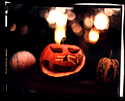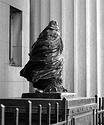Kevin Kehler
Member
I took several pictures of some snow patterns I found interesting but I am having a very difficult time printing them. I tend to either have flat white with the patterns being almost undecipherable or a muddy grey patterns. I have tried high contrast grades (4-4.5), different paper (Ilford RC pearl and some old Kodak RC glossy) and shortening development times. I am attaching a scan of the negative (which is fairly dense) where the levels have been set to give maximum information.
Anyone got any special tips for this type of negative? Would solarization give me anything usable?
Anyone got any special tips for this type of negative? Would solarization give me anything usable?
Last edited by a moderator:





